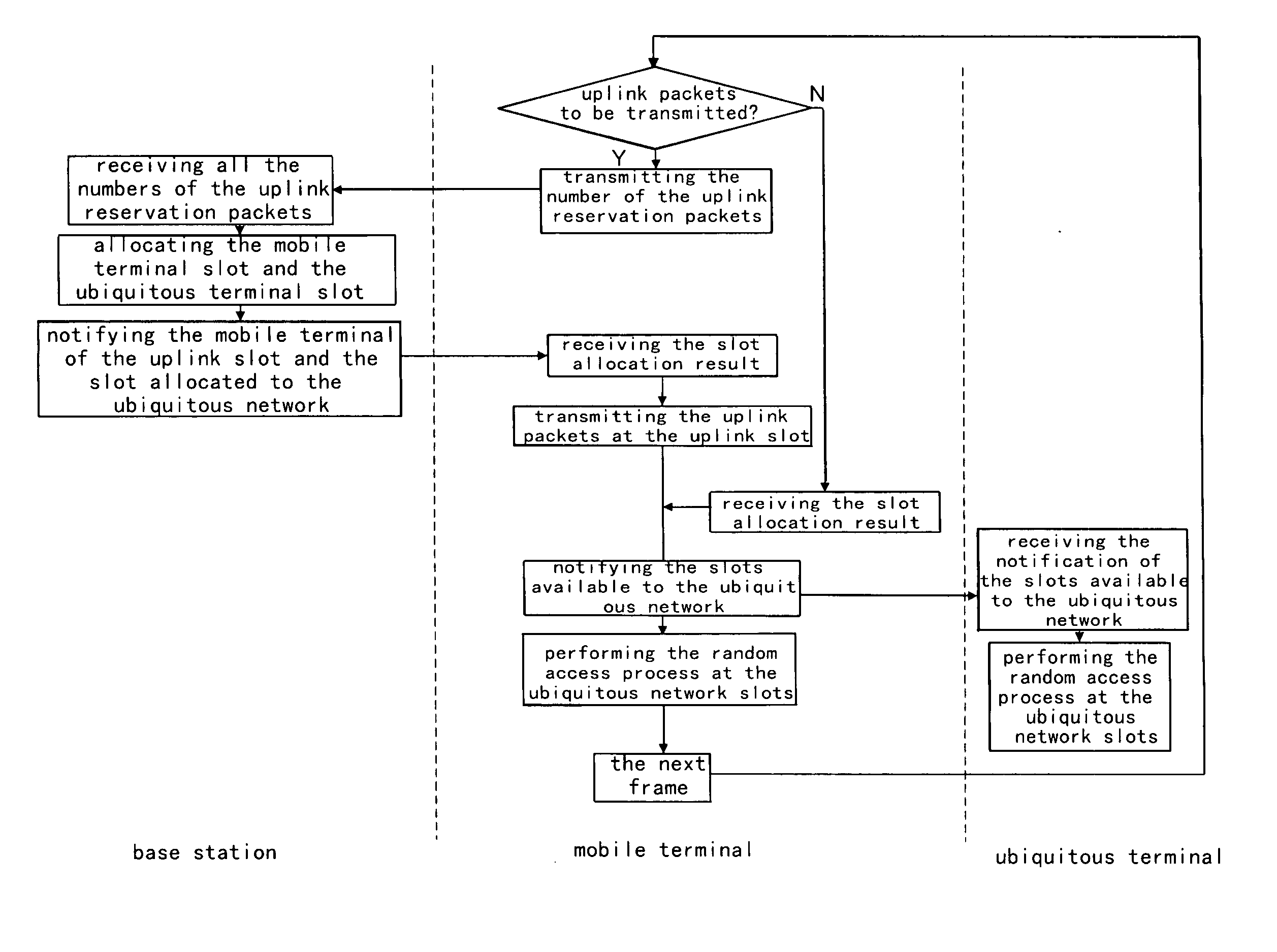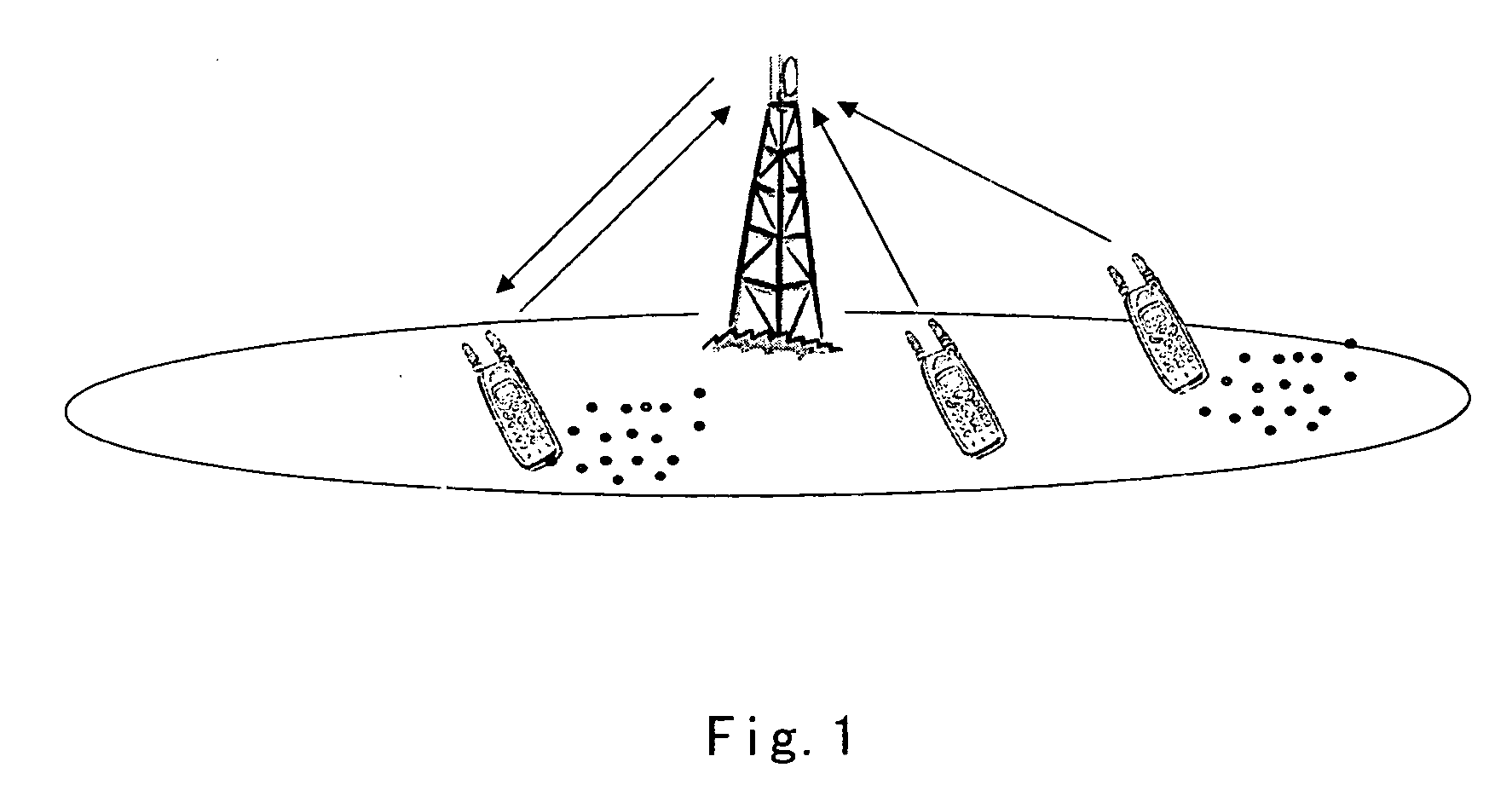Method and device for integrating a cellular network and a ubiquitous network
a cellular network and ubiquitous technology, applied in the field of network convergence, can solve the problems of lack of compatibility in different systems, large interference in the slot of reverse communication, and high power consumption of terminal types
- Summary
- Abstract
- Description
- Claims
- Application Information
AI Technical Summary
Benefits of technology
Problems solved by technology
Method used
Image
Examples
embodiment 1a
[0085] [TDD / TD] the cellular network uses the time division duplex (TDD) mode. The ubiquitous network and the cellular network are combined in the time divided multiplex (TD) mode, and they adopt different access modes. The cellular network access mode can be WCDMA while the ubiquitous network access mode can be UWB or bluetooth. The differences between the ubiquitous terminal and the mobile terminal are embodied in the transmitter and the receiver. The transmitter and the receiver related in the present invention have all the functions of the base station and the terminal in the WCDMA system in the prior art, such as the function of transmitting data, receiving data, and processing data. For example, if the communication mode is WCDMA, the base station and the terminal according to one embodiment of the present invention will have all the functions of the base station and terminal in the WCDMA system, in which the functions of signal processing relative to transmission, modulation ...
embodiment 1b
[0105] [TDD / TD] the cellular network uses the time division duplex (TDD) mode. The ubiquitous network and the cellular network are combined in the time divided multiplex (TD) mode, and they adopt different access modes, such as the TDM mode.
[0106] The basic concept diagram is shown in FIG. 2, wherein the uplink and downlink adopt the TDD mode and the base station and the terminal adopt the TDM mode.
[0107] The flow is shown in FIG. 5 and the specific flow is as follows (the architectures of the base station, the mobile terminal and the ubiquitous terminal are shown in FIG. 4):
[0108] 1) the mobile terminal determines whether there are packets to be transmitted.
[0109] 2) if yes, the procedure proceeds to step 3); if no, receives the slot allocation result transmitted from the base station and proceeds to step 7), wherein all the mobile terminal can receive the slot allocation result.
[0110] 3) the uplink signal reservation unit 404 generates a reservation request and transmits the ...
embodiment 2a
[0120] [TDD / TD] the cellular network adopts the TDD mode. The ubiquitous network and the cellular network are combined in the FDM mode. The ubiquitous network and the cellular network use different access modes.
[0121] The basic concept is shown in FIG. 6, wherein both the uplink and the downlink use the TDD mode, and the base station communicates with the terminal in the FDM mode.
[0122] The flow is shown in FIG. 7 and the specific flow is as follows (the architectures of the base station, the mobile terminal and the ubiquitous terminal are shown in FIG. 8):
[0123] 1) the mobile terminal determines whether there are packets to be transmitted.
[0124] 2) if yes, the procedure proceeds to step 3); if no, receives the frequency band allocation result transmitted from the base station and proceeds to step 7), wherein all the mobile terminal can receive the frequency band allocation result.
[0125] 3) the uplink signal reservation unit 804 generates a reservation request and transmits the...
PUM
 Login to View More
Login to View More Abstract
Description
Claims
Application Information
 Login to View More
Login to View More - R&D
- Intellectual Property
- Life Sciences
- Materials
- Tech Scout
- Unparalleled Data Quality
- Higher Quality Content
- 60% Fewer Hallucinations
Browse by: Latest US Patents, China's latest patents, Technical Efficacy Thesaurus, Application Domain, Technology Topic, Popular Technical Reports.
© 2025 PatSnap. All rights reserved.Legal|Privacy policy|Modern Slavery Act Transparency Statement|Sitemap|About US| Contact US: help@patsnap.com



